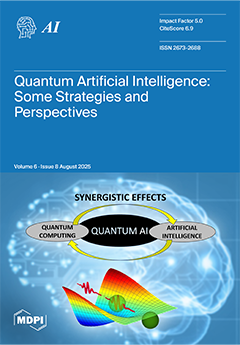As large language model (LLM) tutors evolve from scripted helpers into adaptive educational partners, their capacity for self-regulation, ethical decision-making, and internal monitoring will become increasingly critical. This paper introduces the Needs-Driven Consciousness Framework (NDCF) as a novel, integrative architecture that combines Dennett’s
[...] Read more.
As large language model (LLM) tutors evolve from scripted helpers into adaptive educational partners, their capacity for self-regulation, ethical decision-making, and internal monitoring will become increasingly critical. This paper introduces the Needs-Driven Consciousness Framework (NDCF) as a novel, integrative architecture that combines Dennett’s multiple drafts model, Damasio’s somatic marker hypothesis, and Tulving’s tripartite memory system into a unified motivational design for synthetic consciousness. The NDCF defines three core regulators, specifically
Survive (system stability and safety),
Thrive (autonomy, competence, relatedness), and
Excel (creativity, ethical reasoning, long-term purpose). In addition, there is a proposed supervisory
Protect layer that detects value drift and overrides unsafe behaviours. The core regulators compute internal need satisfaction states and urgency gradients, feeding into a softmax-based control system for context-sensitive action selection. The framework proposes measurable internal signals (e.g., utility gradients, conflict intensity Ω), behavioural signatures (e.g., metacognitive prompts, pedagogical shifts), and three falsifiable predictions for educational AI testbeds. By embedding these layered needs directly into AI governance, the NDCF offers (i) a psychologically and biologically grounded model of emergent machine consciousness, (ii) a practical approach to building empathetic, self-regulating AI tutors, and (iii) a testable platform for comparing competing consciousness theories through implementation. Ultimately, the NDCF provides a path toward the development of AI tutors that are capable of transparent reasoning, dynamic adaptation, and meaningful human-like relationships, while maintaining safety, ethical coherence, and long-term alignment with human well-being.
Full article





